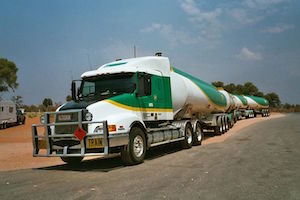Mysteries of the Earth
Terra Preta as Terra Firma

For being one of the most verdant and lush places in the world, the Amazon rainforest has some of the worst soil on the planet. It's highly infertile. In fact, sand from the Sahara desert, blowing across the Atlantic Ocean, supplies many of the nutrients it needs.
When sand becomes a source of nutrition, I’d call that a mystery.
There are large patches of dark earth—known as terra preta—scattered all over the Amazon Basin that are inexplicably fertile. In fact, terra preta contains some of the richest soils on the planet.
For years, settlers were not sure where it came from. One common idea was that terra preta was the result of volcanic ashfalls originating in the Andes mountains. Eventually, though, we figured out where that soil came from: it was man-made.
The native peoples of the region had spent centuries managing the soil carefully. To make it fertile, they added a mixture of charcoal, bone, and manure to the soil.
You've heard of slash-and-burn, right? Well, the natives used slash-and-char, which involves turning the cut down plants and trees into charcoal (hence the name) instead of just burning it. The charcoal is then mixed with the bone and manure, and then buried within the soil.
The creation of terra preta isn't just an interesting type of fertilization, either. That soil stays immensely fertile for thousands of years. Charcoal is the most important ingredient: it lowers soil acidity, can absorb and then slowly release nutrients over time, and provides habitat to important soil microbes with its porous surface.
The other ingredients are important as well…though much of this remains a mystery. Scientists still do not fully understand terra preta. They are working quite persistently at it, though. I’d say that mastering the creation of terra preta would be a vital tool in regenerating damaged soils around the world.
_________
Quotable
Yes, the Quote-Off with that other Yard Ramp Guy. En garde:
“There are dark shadows on the earth, but its lights are stronger in the contrast.”
— Charles Dickens
Taking the Road Train
Or Maybe Just Pull Over & Watch the Traffic

Anyone who spends a lot of time road tripping has likely seen a road train, a semi truck with more than one trailer behind it. They only receive so much use here in the United States since they are difficult and dangerous to drive. Plus, they're usually limited to just two trailers.
If you want to see the really big road trains, you need to head south. A lot farther south.
Australia is the birthplace of the road train, where they first appeared in the Flinders Range of South Australia in the mid 1800s, pulled behind traction engines, giving them a much more train-like appearance.
Today, Australia still uses more road trains than the rest of the world combined—and for good reason. Australian roads are some of the longest and most desolate in the world.
The overwhelming number of consumer cars and trucks we manufacture today are not capable of traveling between service stations in many parts of Australia on a single tank of gas. If you don't plan carefully, you WILL get stranded.
It's generally just a much better idea to fly wherever you're going. (Which most people do.) If you do decide to road-trip, though, you'll spend ages on the road without seeing anyone, followed by a massive road train almost knocking you off the road with the wind from its passage.
And it doesn’t stop there. Double road trains aren't a particularly big deal in Australia. The really impressive ones are the triples and quadruples. You'll want to just pull off the side of the road when one gets near. These are the biggest and heaviest road-legal vehicles in the world, often pushing 200 tons. (There are much, much bigger ones, like the Bagger 288, but they're certainly not road-legal.)
While dangerous, these cost-effective road trains have been vital to the development of many remote Australian regions.
_________
Quotable
The Quote-Off with that other Yard Ramp Guy continues:
“Humor does not diminish the pain — it makes the space around it get bigger.”
— Allen Klein
Getting to the Cashews
Or: Why the Big Nuts Always Rise to the Top

That's me, looking for cashews.
Anyone who's worked in shipping—or anyone who has ever opened a jar of mixed nuts—has experienced the same thing, over and over again: When you're moving a jumble of little stuff, the big items (or Brazil nuts) always end up at the top.
At first glance, it seems simple enough: the smaller stuff can just fit down into the holes between everything else. Problem solved. Except...if that were true, then the small stuff would be at the bottom but the big stuff would still be scattered all the way through.
Well, what about density? If the big items are just less dense, they'd pop right to the top, yes? Well, sometimes, though much denser large objects also tend to rise to the top. It's only the items with a slightly different-than-normal density that remain scattered throughout.
In order to understand this, we need to view it a bit differently. Let’s approach it in terms of convection. In a liquid, temperature and pressure differentials can create convection currents that move particles around in huge looping patterns. If you treat the mixed nuts as a fluid, convection actually starts to accurately model what's going on. (Scientists call it granular convection.)
As it turns out, both of our previous ideas were almost right. As we move the box around and shake its contents, we force the particles in the middle upward in a current. The particles on the sides then fall into the gaps left by the rising particles in the center. Which is where our first idea comes into play: the smaller particles can fit down into the new gaps more easily, leaving the biggest ones on top.

Found 'em.
We still have the density issue confusing things, though. And this we can't solve quite as easily. We know what happens, and we have an idea how it happens (weirdly enough, density doesn't particularly affect granular convection on this scale if the mixture is in a vacuum), but we still haven't put our fingers on all the whys.
One thing is for sure, though: Cashews are definitely the best. You'd have to be a fool to think otherwise. (Well, the almonds can stay, too.) Brazil nuts and all the rest are just something you have to endure for the sake of the cashews.
_________
Quotable
Good thing people never run out of things to say. My Quote-Off with that other Yard Ramp Guy continues:
“God gives the nuts, but he does not crack them.”
— Franz Kafka
Building a Cathedral
Don Justo, with Gusto

Don Justo at age 85
Some people’s work ethics are entirely too formidable. I'm by no means a lazy man, but sometimes even I like to relax and spend an entire day on the lake with a fishing pole.
Not Justo Gallego Martínez. Known also as Don Justo, he is a former monk, living in Spain, and he’s been building his own cathedral for decades.
After eight years of living in a Trappist monastery, he left the order due to tuberculosis. And he promised himself that he would build a shrine if he recovered. Don Justo started work on the cathedral in 1961.
Martínez's work begins each morning at 6 AM and lasts for about ten hours a day. He takes off only on Sundays. He has missed but a handful of days during the decades of the cathedral’s construction, and he’s done the vast majority of the work completely alone, though he does have a helper these days.
When he started, there was no plan. He just leveled the ground and started building. To this day, he regularly changes the design, according to inspiration or whim. The cathedral doesn't have any planning permissions from the city of Mejorada del Campo, nor does it have the blessing of any part of the Catholic Church.
 Despite the lack of city permissions, Don Justo hasn't had to deal with any real trouble from the city. Most residents are quite proud of it, though a small number consider it an eyesore.
Despite the lack of city permissions, Don Justo hasn't had to deal with any real trouble from the city. Most residents are quite proud of it, though a small number consider it an eyesore.
Most of the materials he uses for construction are recycled. Local construction companies and a nearby brick factory frequently donate excess material to the project. Frequently, he also folds everyday objects into the design. For example, he molded his columns with old oil drums.
I've thrown up a few sheds in my life, but a whole cathedral? I don't have a fraction of the ambition to handle that. And then there’s Don Justo, who doesn't even use a crane. And he's 90 now. Not for me.
_________
Quotable
That other Yard Ramp Guy keeps on quoting, and, I must say, his choices are pretty good, if a bit too tilted toward sports. Oh, well. As Michael Jordan said, “Just play. Have fun. Enjoy the game.” So, en garde, Yard Ramp Guy:
“If opportunity doesn’t knock, build a door.”
— Milton Berle





